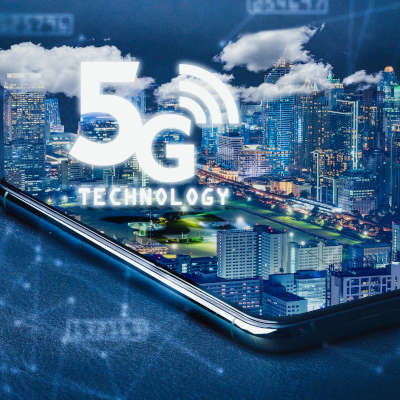BNMC Blog
How 5G Could Shape the IoT
The fifth generation of wireless communications—5G—has been hotly anticipated, already appearing in advertisements for cellular connectivity and set to expand the potential of automated processes. One particularly pertinent application is to the smart devices and services that make up the Internet of Things. Let’s consider where 5G currently stands, and how its capabilities could impact the IoT.
Where 5G Stands
While 5G has appeared in marketing efforts for some time, 2020 was the first time that it was practically applied anywhere. Here are the three benefits that 5G is staged to provide:
- Lower latency - The technology promises to basically eliminate the latency issues people have with their wireless cellular applications.
- Increased rates - Faster wireless speeds allow data to be transmitted, providing users with content quicker.
- Enhanced capacity - As 5G grows, more devices will be able to be connected, meaning more can be done.
Of course, an upgrade to cellular networking requires an effort from a few parties. Not only does the infrastructure need to be implemented to support them, but manufacturers also need to develop and produce devices that have 5G capabilities.
How 5G Can Impact the IoT
The prevalence of the Internet of Things has been increasing, with the total number of devices classified as such estimated in the 24 billion range in 2020. Once latency is no longer an issue thanks to 5G, the capabilities of the IoT will be much more than they are with 4G LTE, making the IoT far more viable. Just think about what devices can do, and how quickly, with access to speeds that could download an entire movie in 1080p somewhere between 8 to 10 seconds—potentially changing a lot. For instance:
- Manufacturing – Of all industries, manufacturing will likely see the most impact. The low-latency, high-speed connections means that business can happen in virtual real time, with massive amounts of data processed and rendered to make decision-making simpler and a more dynamic process. This means quality control, procurement, distribution, and customer relationship management all improve as smart technology actively tracks and reports data at remarkable speed.
- Supply chain – The current levels of oversight required for supply trade management are considerable. IoT has been slowly being deployed to make this process more efficient, but with the 5G connectivity and reporting issues that today’s smart devices have, it will improve businesses’ ability to manage their supply chain effectively.
- Municipal – Municipal services have recently seen the benefits of the IoT by means of automation. With the implementation of 5G and IoT, you will begin to see “smart cities” developed where essential utilities such as water, sewer, traffic, and electricity are all managed using IoT devices that modulate the need for changes to these systems with very little human oversight: saving taxpayers gobs of cash.
- Autonomous vehicles – While autonomous vehicles have been planned for some time, 5G connectivity could be what makes them practicable. This not only includes taxis and other car services, but it also includes the multi-billion-dollar shipping industry. A lot of information goes into making an autonomous vehicle safe for road use, and with 5G you will finally have the speed and reduction of latency to make it a viable situation.
- Healthcare – With the amount of data that healthcare organizations send and receive, 5G could help boost its efficiency significantly. Today, these systems are useful but are often marginalized by the speeds and latency of modern Internet connections. With gigabit speeds and very little perceptible latency, you will begin to see that all information that is needed for every patient is there on demand.
With the emergence of 5G, society could stand to see some significant improvements by applying it to the Internet of Things. What improvements do you think will be most impactful? Share your thoughts in the comments, and make sure to come back to our blog for more!




Comments